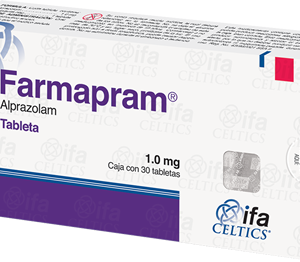- Discount up to 35% for first purchase only this month.
- sales@psychedelicsjourney.com
- +1 (737) 310-1213
Overnight Delivery (FedEx) available.
Our support is always available round the clock.
We accept Zelle, Cash App, Apple Pay, Bitcoin, etc
Tramadol is a narcotic-like pain reliever.Tramadol is used to treat moderate to severe pain. The extended-release form of tramadol is for around-the.
Tramadol 200mg: A Comprehensive Overview
Tramadol is a centrally acting analgesic commonly used to manage moderate to moderately severe pain. It is classified as a synthetic opioid and is typically prescribed when other pain-relieving medications, such as nonsteroidal anti-inflammatory drugs (NSAIDs), are not effective or appropriate. The 200mg dose is one of the higher doses available and is typically used for patients who have developed tolerance to lower doses or have moderate to severe pain that requires stronger relief.
Below is a unique and in-depth overview of Tramadol 200m, including its uses, mechanism of action, dosages, potential side effects, and safety precautions.
What is Tramadol 200mg?
Tramadol is a synthetic opioid analgesic used primarily to treat moderate to severe pain, either on an acute or chronic basis. It is available in various dosages, with 200mg being a higher dose typically prescribed for more intense pain or for individuals who have developed tolerance to lower doses of the medication. Tramadol is often prescribed for conditions such as post-surgical pain, chronic pain conditions, and neuropathic pain.
Tramadol 200mg is typically available in extended-release (ER) formulations, designed to release the medication gradually over time. This helps maintain steady pain relief throughout the day, reducing the need for multiple doses. Extended-release tablets should be taken whole and not crushed or broken to avoid overdose.
How Does Tramadol 200mg Work?
Tramadol works through multiple mechanisms to reduce pain perception:
1. Opioid Receptor Agonism: Tramadol binds to opioid receptors in the brain and spinal cord, which are responsible for modulating pain. This action is similar to that of traditional opioids like morphine or codeine although it is less potent.
2. Serotonin and Norepinephrine Reuptake Inhibition: Tramadol also affects serotonin and norepinephrine, two neurotransmitters that are involved in pain regulation. By inhibiting their reuptake, Tramadol enhances the body’s analgesic (pain-relieving) effect through these pathways as well.
Tramadol’s combined action on the opioid receptors and the neurotransmitters makes it effective at treating a wide variety of pain types, including somatic pain (from tissues) and neuropathic pain (from nerve damage).
Uses of Tramadol 200mg
1. Moderate to Severe Pain:
– Tramadol 200mg is typically prescribed for patients experiencing moderate to severe pain that does not respond well to other analgesics like acetaminophen or NSAIDs. It is especially effective for chronic pain conditions, such as:
– Osteoarthritis
– Back pain
– Fibromyalgia
– Chronic musculoskeletal pain
– Post-surgical pain
2. Neuropathic Pain:
– Neuropathic pain, caused by nerve damage from conditions like diabetes (diabetic neuropathy), shingles (postherpetic neuralgia), or multiple sclerosis, may also be treated with Tramadol 200mg. Tramadol’s action on serotonin and norepinephrine makes it particularly useful for these types of pain, which are often less responsive to traditional opioids.
3. Acute Pain:
– Tramadol 200mg may be used to manage acute pain following surgery or injury, when immediate pain relief is needed, and other medications like ibuprofen or aspirin are not strong enough to manage the discomfort.
Dosage and Administration of Tramadol 200mg
The 200mg extended-release formulation of Tramadol is typically prescribed for patients who have developed a tolerance to lower doses or have been previously prescribed Tramadol in an immediate-release formulation.
– Initial Dosage: For patients not previously taking Tramadol, a lower starting dose is usually prescribed (e.g., 50mg or 100mg), and gradually increased depending on how the patient responds to the medication.
– For Extended-Release 200mg Tablets: Tramadol 200mg should be taken once a day, typically in the morning, with or without food. The extended-release formulation provides 24-hour relief, so the medication should not be taken more frequently than once daily.
4. Opioid Pain Reliever
5. Tramadol Analgesic
6. Pain Management Tramadol
7. Chronic Pain Medication
8. Tramadol Prescription
9. Tramadol for Severe Pain
10. Extended Release Tramadol
11. Tramadol Painkiller
12. Tramadol for Back Pain
13. Tramadol for Arthritis
14. Tramadol Pain Relief Tablets
15. Pain Relief Tramadol 200mg
16. Tramadol for Neuropathic Pain
17. Tramadol Pain Control
18. Tramadol Long-Acting
19. Tramadol ER 200mg
20. Tramadol Side Effects
21. Tramadol Usage Guide
22. Tramadol for Post-Surgical Pain
23. Tramadol for Fibromyalgia
24. Tramadol and Pain Management
25. Tramadol Prescription Medicine
26. Tramadol Withdrawal Symptoms
27. Tramadol Addiction Risk
28. Tramadol Pain Relief Mechanism
29. Tramadol Brand Name
30. Tramadol Dosage Information
| Quantity | 60 Pills, 120 Pills, 180 Pills, 240 Pills, 300 Pills |
|---|






Psychedelic Journey is a Fast, Friendly, Discrete, Reliable online psychedelic store created to make ordering and mailing products very safe and secure.
Reviews
There are no reviews yet.